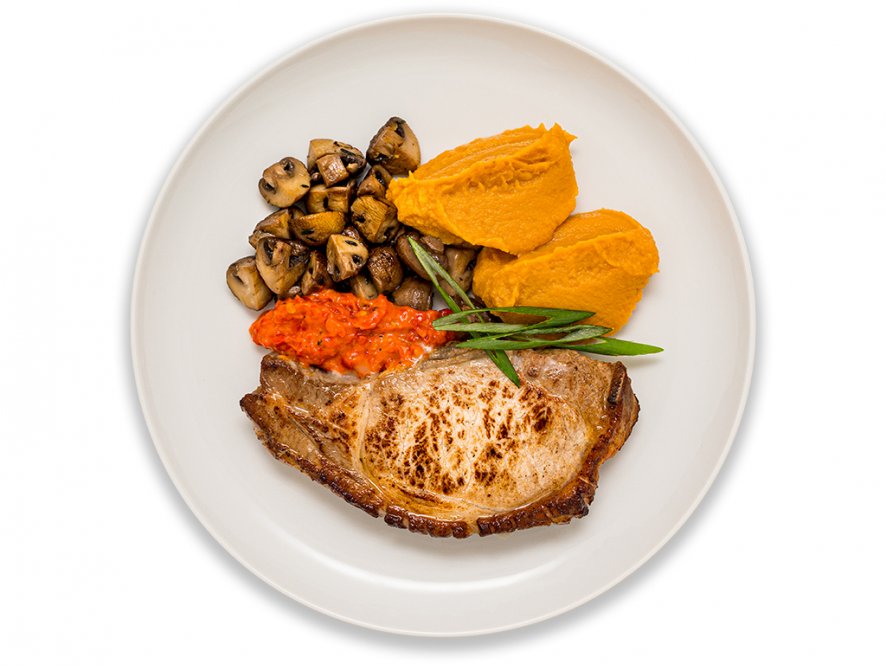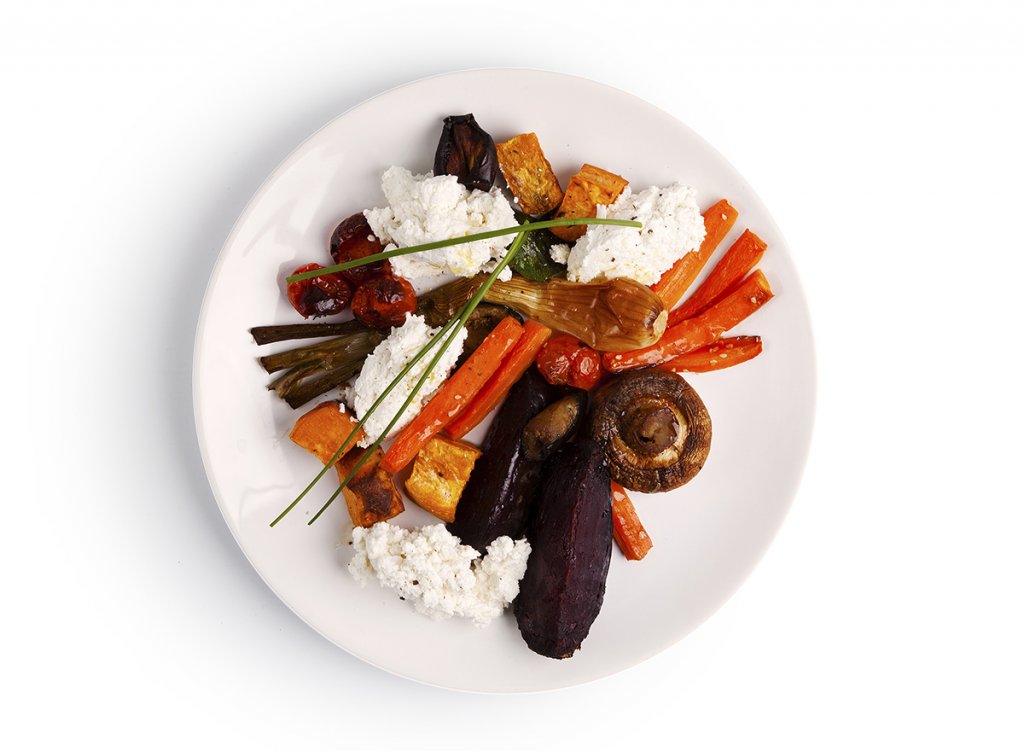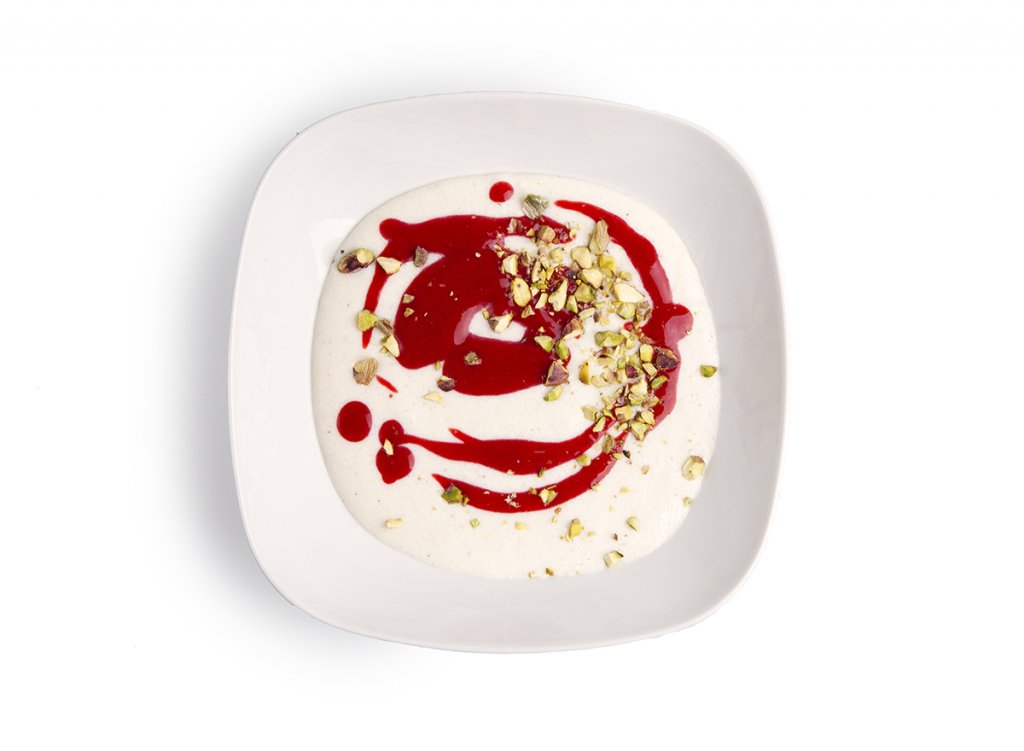6. 12. 2021
Colorful Winter On a Plate
Did you know that the color of what we eat affects our mood? It’s no wonder
that with the first falling leaf, we instinctively switch to foods colored in
warm tones of yellow and orange, so that we can remember the sun's rays and the
optimism of summer days, at least on a plate. In addition, they evoke fire, and
therefore heat. And what more could we want from food in the winter than to keep
us warm?

Sharing with us his proven recipes for winter comfort foods was Chef Aleš Karpíšek, manager of the online restaurant Food and Time, having been formerly involved in undertakings of the Ambiente family such as Eska, Pizza Nuova or Café Savoy. In his culinary manuscript, the emphasis is mainly on fresh, seasonal and local ingredients.

FIVE QUESTIONS FOR ALEŠ KARPÍŠEK
1. How can we tell in your kitchen that winter is coming? What fundamentally changes? And which seasonal ingredient will you always have?
One thing that won't be missing in my kitchen in the winter is cream. For instance, just this morning I baked a cake and added sour cream to it. I cook fattier foods, you know, fat warms the body. I am meanwhile focusing on simplicity however, due in part to the less bountiful selection of seasonal ingredients. I bring out the tastes more with oils and herbs. A couple of my go-to veggies are carrots and mushrooms, fresh, dried or even cooked. In my kitchen in the winter, we go through a lot of canned foods, including marmalade. Another thing I can't miss out on is preparing food by cooking and stewing. Hot meals form the basis.
2. Do you also adapt your favorite Italian recipes to the Czech winter? Is it even possible when Mediterranean dishes are rather fresh and light?
Yes, I definitely adapt and am happy to do so. For example, cream risotto with mushrooms or spaghetti Carbonara according to the traditions of northern Italy are dishes quite often making it to our table in the winter months. I prepare the winter variant of spaghetti Carbonara with cream and the summer version, lightened, with egg yolks. What greatly inspires me is the year-round use of tomatoes. If they are harvested and immediately preserved in the best condition, they can be enjoyed all year round.
3. How can we enjoy squash and carrots multiple ways but so that we don't get tired of eating these healthy and delicious local foods? Do you like experimenting with combining traditional and exotic ingredients?
I like each of the mentioned ingredients in a slightly unusual way. I adore carrots baked and encrusted in white sesame or just with butter, with which really interesting dishes can be created. As for the squash family, I prefer to reach for pumpkin seed oil or roasted pumpkin seeds. But it is true that we have recently tried a new recipe for pumpkin soup with coconut milk, and I myself was surprised at how well the combination of the exotic and the traditional works. And that's actually how I’ll follow up on the second part of the question - I'm not experimenting much in the true sense of the word. I like to go for really good Asian cuisine, but I love Italian and Mediterranean cuisine, which is far from exotic. But what I enjoy when I cook exotic cuisine is the use of our local ingredients. I'm not changing the procedures, but I'm experimenting with replacing their local ingredients with ours.
4. Every decent menu deserves a sweet spot; would you have a tip?
My favorite is panna cotta with raspberry sauce, and a perfectly prepared tiramisu is a sure bet.
5. Do you already have all the Christmas presents? :) Do you also give edible gifts that you crafted yourself? And what are the must-have items on your Christmas dinner table?
This year our family gift is assured, as we will be sharing a baby under the tree. This itself is a huge gift, and I will deal with the rest as usual on December 23 by flying in the Kotva shopping center and buying for everyone there. Christmas and shopping for gifts do not stress me, on the contrary... And I certainly like to give edible gifts. This year, we started producing a range of high-quality prepared sauces that will please any household. Twice in my life, my wife and I have tried something other than traditional Czech Christmas, and both cases have confirmed that it is better for us and our family to stick with Christmas classics. That's why we have to have pork schnitzel, wine sausage, fried carp and potato salad with Gothai salami on our table. And of course, there must be hearty beef broth with liver dumplings - these are our childhood memories.
> Main course with meat / 2 portions
Grilled bone-in pork chop with pumpkin puree, mushrooms and ajvar
- 400 g Hokkaido squash
- 2x 250g bone-in pork chop with fat cap (Aleš Karpíšek buys them in the Naše maso butcher shop on Dlouhá street)
- Olive oil
- 100 g mushrooms (preferably small, brown champignons)
- 100 g ajvar
- 40 g butter
- Salt and pepper
Wash the Hokkaido, slice open and remove the seeds, cut it into 2 x 2 cm cubes and boil in water until soft, about 20 minutes.
In the meantime, prepare the meat and mushrooms. Season the pork chops with salt and pepper, sear them in a pan with a little olive oil on each side for 3 minutes, then braise in the oven at 150° C for about 12 minutes. Sauté quarter-cut mushrooms in the same pan for about 1-2 minutes, season with salt and pepper. Finally, add them to the braising meat so that they do not cool down.
Drain the fully cooked Hokkaido, add the butter and use a hand mixer to create a puree, season with salt and pepper. Serve the chops with the Hokkaido puree, roasted mushrooms and ajvar sauce.
Flavoring tip: Into the same pan used to cook the meat and mushrooms, add a knob of butter, a few drops of Worcestershire sauce and some meat broth from the pan as needed. Let it simmer slightly and finally pour this sauce over the meat when serving.
How to make homemade ajvar? Bake 30 g of eggplant, 50 g of red peppers, 50 g of zucchini and 2 cloves of garlic, afterwards mix everything together with half a dried chili pepper and 30 ml of olive oil. Add salt and pepper to taste.

> Vegetarian main course / 2 portions
Baked winter vegetables with ricotta
- 2 beets
- 4 baby carrots
- 2 parsley roots
- 4 mushrooms (champignons)
- 1 small zucchini
- 6 cherry tomatoes
- 50 ml olive oil
- Favorite herbs (e.g. rosemary, basil, sage, parsley...)
- 200 g ricotta cheese
- Salt and pepper
Clean the vegetables, wash them, but don't cut them yet. Mix with the olive oil, salt, pepper and add the chopped herbs. In an oven preheated to 160 °C, bake the beets first for 20 minutes. Then add the rest of the vegetables and raise the temperature to 190 °C for about 15-20 min. After baking, let the vegetables cool slightly, cut into larger pieces and serve with a few tablespoons of ricotta and drizzled with olive oil. You can also sprinkle with additional fresh herbs.

> Dessert / 5 portions
Panna cotta with raspberry sauce and pistachios
Panna cotta:
- 500 ml 33% cream
- 50 g caster sugar
- Seeds from 1/2 a vanilla bean
- 50 ml water + gelatin (slice or powdered in the right proportion to water)
Raspberry sauce:
- 200 g raspberries
- 100 g peach compote
- 20 ml lemon juice
- 5 g powdered sugar
- + unsalted pistachios
Heat the cream, sugar and vanilla in a saucepan, but do not let boil. In the meantime, dissolve the gelatin in the water according to the instructions (for 50 ml of water, you usually need 2 g of gelatin powder or approx. ¾ gelatin slice). After dissolving, pour the gelatin into the warmed cream and mix. Strain through a fine sieve to remove any lumps and stir for a while until the mixture begins to thicken slightly. Then pour the liquid concoction into 5 dessert cups, cover them and let them freeze.
To prepare the sauce, mix all the above ingredients, then strain the sauce to remove the raspberry seeds. Pour the sauce over the frozen panna cotta, sprinkle with pan-roasted crushed pistachios and serve.
Bon appétit!